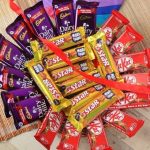Denso Wave, the Japanese company that invented the QR code, certainly never imagined that it would take a global epidemic to bring their 1994 invention to the forefront in 2021. Yet, in the name of public safety, we’re using QR codes more than ever. However, it is critical that we keep the intended usage of QR codes in mind, particularly when developing marketing tactics. This is due to the fact that individuals are utilising their gadgets more than ever before. Our recent experience with QR codes reminded us that they can be a simple tool for quickly transferring information from a company to a customer.
Let’s look at how the modest QR code may become a powerful tool in your marketing strategy and help you engage your audience in new ways.
What exactly is a QR code, and how does it function?
A QR code appears to be a bizarre picture of black squares and dots at first glance. This image, on the other hand, provides considerably more because it can be scanned by any smartphone, transforming the image into something more meaningful. The “QR” stands for “rapid response,” which is appropriate given that you may transmit a substantial amount of data with a single snap.
QR codes can hold information such as web addresses, links, and a variety of media such as videos and photos. So, instead of typing the address into the search field, why not just type it in? The purpose of a QR code is to make that process easier.
As a result, the QR code becomes (and functions similarly to) a barcode. Pieces of information are represented by the black squares and dots. A QR code is a data encoded in alphabetic, numeric, binary, or Kanji characters.
So, why is something that millions of people around the world can scan at the push of a button good for marketers? We already know the solution is right there in the question, but let’s dig a little further.
We can have marketing with QR codes in a variety of ways.
Besides, we can find QR codes in direct mail campaigns, movie posters, business cards, and other places. Marketers can use them in a variety of ways to communicate and exchange information across various platforms and media.
Business cards:
Instead of cramming your business card with information, keep it simple and use a QR code to direct them to a website, digital portfolio, LinkedIn, Twitter, and other social media sites.
Scavenger hunts:
Scavenger hunts are entertaining and interesting, and they can use QR codes to direct people to areas they might not otherwise visit. Are you planning to open a new store or restaurant? Send people straight there!
Labels:
A QR code on a product label can improve a customer’s experience by giving them access to exclusive digital material or linking them to a web page where they can learn (and buy) more. Malibu Rum, for example, used’smart’ labelling with QR codes to link buyers to the ‘Malibu Games,’ an interactive smartphone game that allows users to earn Malibu items and unlock drink recipes.
Storefront displays:
Your retail store is unlikely to be open 24 hours a day, but a QR code on the door or window can keep the sales coming in after you’ve gone home for the day. Convert a lost transaction into an online sale with the added benefit of customer contact information.
Promotions and discounts:
Discounts tied to a QR code on a billboard may entice new customers to test your business. You can extend this idea by making the discount a “retweet” so that people may share it with their followers and help you reach a wider audience.
Authenticity:
Fashion labels like Diesel, Ralph Lauren, and Nike include QR codes in their items to safeguard customers from buying counterfeit goods. The QR code collects product specific information such as the part number, manufacture date, origin, product name, batch number, and more and is conveniently accessible for quick verification.
Promote Events:
Astute hotels and event organisers can include QR codes on event flyers and brochures, allowing customers to register for events that they will save it to their calendars. The marketing team also benefits because they can include information such as a customer’s name and email address in order to retarget them when similar events occur.
We can integrate QR codes into your marketing mix in a variety of ways that are both simple and interesting.
One of the most critical aspects of using QR codes into your marketing mix is figuring out a creative approach to get people to not only notice but also scan the QR code.
Gaining an incentive or simplifying an often time-consuming process are two significant drivers. The introduction to the QR code, on the other hand, must be interesting in order for users to notice the two drivers mentioned above.
Television
A QR code in a TV commercial almost seems like the last place a QR code should be. After all, commercials on television aren’t a permanent feature. The ad’s repetitious nature, on the other hand, is extremely powerful. Burger King, for example, did this during a VMAs commercial, which was presented to viewers multiple times throughout the broadcast and included a link to download the company’s app. The commercial was not only witty, but it also provided discounts and freebies, as well as the chance to win a year of free Whoppers and tickets to the next VMA event.

















